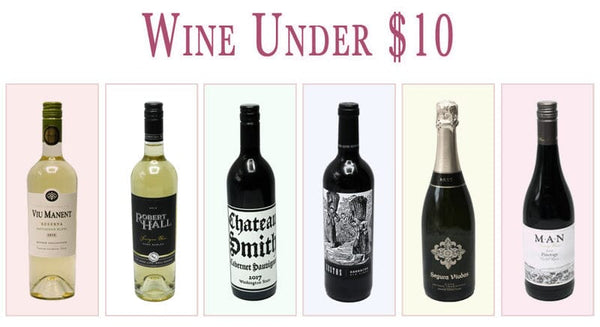Expressive Wines for $10 or less

While Wine Enthusiast, Wine Spectator, and other publications now commonly classify “value” wines—those combining good quality with an economical price tag—as costing less than $15, $20, or even $40 (see Wine Spectator’s “Top 10 Value Wines of 2021,” for example), Bottle Barn wine store offers a combination of low margins and a curated selection that makes it the number one wine retailer in the country for those seeking great vinos that don’t break the bank. It’s easy to find them, too, by just clicking on the “under $10” option on the homepage.
How to narrow down that list for truly remarkable selections? Here’s some advice:
- Look for $10 and under wines originating from a single appellation or vineyard. Rather than, say, a “California” wine that can contain the produce from grapes anywhere in the state, single-origin wines are likely to boast greater expression of a specific terroir, and this also indicates greater winemaker attention. Look for wines with a single-vineyard name, an “estate” designation, or a recognized appellation, including, for example county-level designations and AVAs in the U.S., AOCs in France, and DOs in Chile. Examples include 2020 Viu Manent Estate Collection Reserva Sauvignon Blanc, $6.99, from a family-owned winery the Valle de Colchagua DO in Chile; or the 2020 McManis Family Vineyards River Junction Estate Chardonnay, with 100% of grapes harvested from the estate-grown River Junction vineyard located at the confluence of the San Joaquin and Stanislaus Rivers ($8.99); or finally, the 2018 Famille Perrin Cotes du Rhone Reserve Rouge from France’s eponymous AOC, a typical Rhone “GSM”(Grenache, Syrah, Mourvedre) blend, also $8.99.
- Compare the suggested retail price with the actual sale price. There can be some huge savings here thanks to Bottle Barn’s purchasing power and knowledgeable wine buyers. For example, the 2019 Robert Hall Paso Robles Sauvignon Blanc, with a suggested price of $18.00, available here for $9.99.
- Look for award-winning wines. These are often noted on the product pages, and although an award does not guarantee you will like the accolade-winning wine, it provides guidance based on recognized quality standards and an expert who has actually tried the wine and found it worth recommending. Examples include the 2017 Charles Smith Wines Chateau Smith Cabernet Sauvignon, which scored 90 points from Decanter.
- Seek out lesser-known varietals or regions—give something new a try (especially for the price)! Never sipped a wine made in Almansa (Spain) or Alentejano (Portugal)? How about wine made from Valdiguié (intriguing, no?) or Pinotage (South Africa’s hallmark varietal) grapes? If you haven’t already, broaden your horizons and you may find a wine perfect for everyday drinking or that you want to pair with a specific dish or an entire meal. Invite friends over for a wine dinner featuring regions or varietals paired with location-inspired dishes.
- Look for phrases or words like “old vine,” “crianza” (for Spanish wine), and “organic” that indicate an extra layer of quality viticulture and winemaking. “Reserve” designations for wines from the US don’t necessarily mean much, but wine made from old vines, although a legal definition is lacking, can mean extra concentration and limited production. “Crianza” is a level of aging in Rioja with strict requirements for barrel time and time before release, and organic production means not only that the viticulture was environmentally-friendly, but also that these techniques likely added some distinction to the resulting fruit. For Old Vine wines, check out the 2019 Bogle Old Vine Zinfandel or the 2019 Zestos Old Vine Garnacha. Suggestions for a Rioja crianza, include Bodegas Lan; and for a value-laden organic wine, the 2019 Dominio de Eguren Protocolo Tinto, also from Spain, $6.99.
- Treat yourself to some quality bubbles! Spanish Cava offers great value and is made using traditional Methode Champenoise, a time-consuming quality process ensuring long-lasting fine bubbles and great taste! Try Bottle Barn’s Segura Viudas Brut for an amazing price of $7.99 per bottle. The Cava DO has strict regulations. Since 2020, “Reserva” means a sparkling wine with a minimum of 18 months of bottle aging before release, and “Brut” signifies a maximum of 12 grams per liter of added sugar during Methode Champenoise production.
Written By: Charlie Leary


















Leave a comment